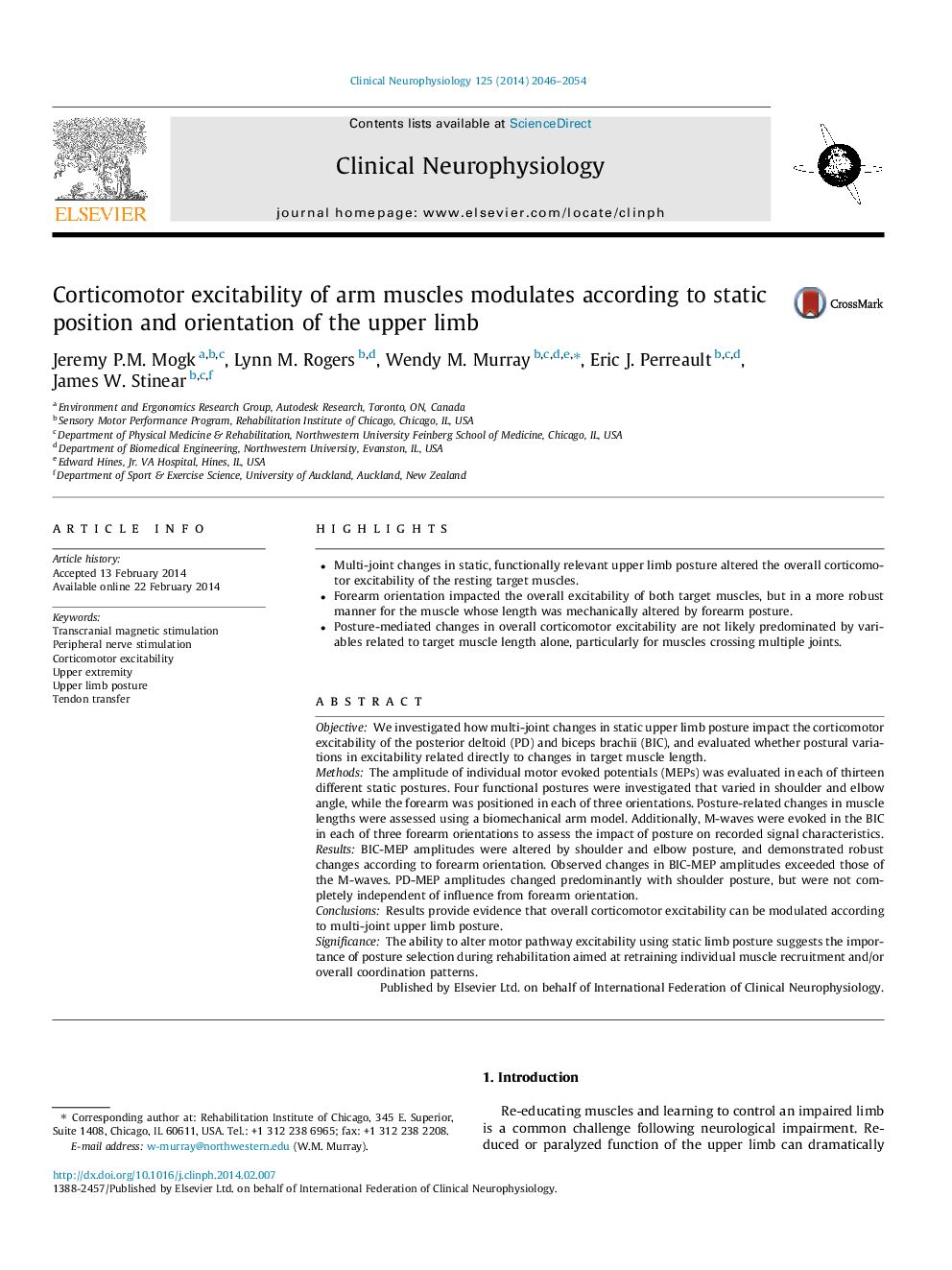| Article ID | Journal | Published Year | Pages | File Type |
|---|---|---|---|---|
| 3042706 | Clinical Neurophysiology | 2014 | 9 Pages |
•Multi-joint changes in static, functionally relevant upper limb posture altered the overall corticomotor excitability of the resting target muscles.•Forearm orientation impacted the overall excitability of both target muscles, but in a more robust manner for the muscle whose length was mechanically altered by forearm posture.•Posture-mediated changes in overall corticomotor excitability are not likely predominated by variables related to target muscle length alone, particularly for muscles crossing multiple joints.
ObjectiveWe investigated how multi-joint changes in static upper limb posture impact the corticomotor excitability of the posterior deltoid (PD) and biceps brachii (BIC), and evaluated whether postural variations in excitability related directly to changes in target muscle length.MethodsThe amplitude of individual motor evoked potentials (MEPs) was evaluated in each of thirteen different static postures. Four functional postures were investigated that varied in shoulder and elbow angle, while the forearm was positioned in each of three orientations. Posture-related changes in muscle lengths were assessed using a biomechanical arm model. Additionally, M-waves were evoked in the BIC in each of three forearm orientations to assess the impact of posture on recorded signal characteristics.ResultsBIC-MEP amplitudes were altered by shoulder and elbow posture, and demonstrated robust changes according to forearm orientation. Observed changes in BIC-MEP amplitudes exceeded those of the M-waves. PD-MEP amplitudes changed predominantly with shoulder posture, but were not completely independent of influence from forearm orientation.ConclusionsResults provide evidence that overall corticomotor excitability can be modulated according to multi-joint upper limb posture.SignificanceThe ability to alter motor pathway excitability using static limb posture suggests the importance of posture selection during rehabilitation aimed at retraining individual muscle recruitment and/or overall coordination patterns.
